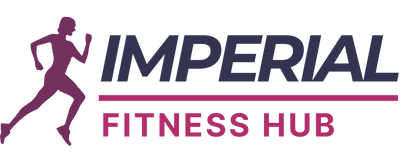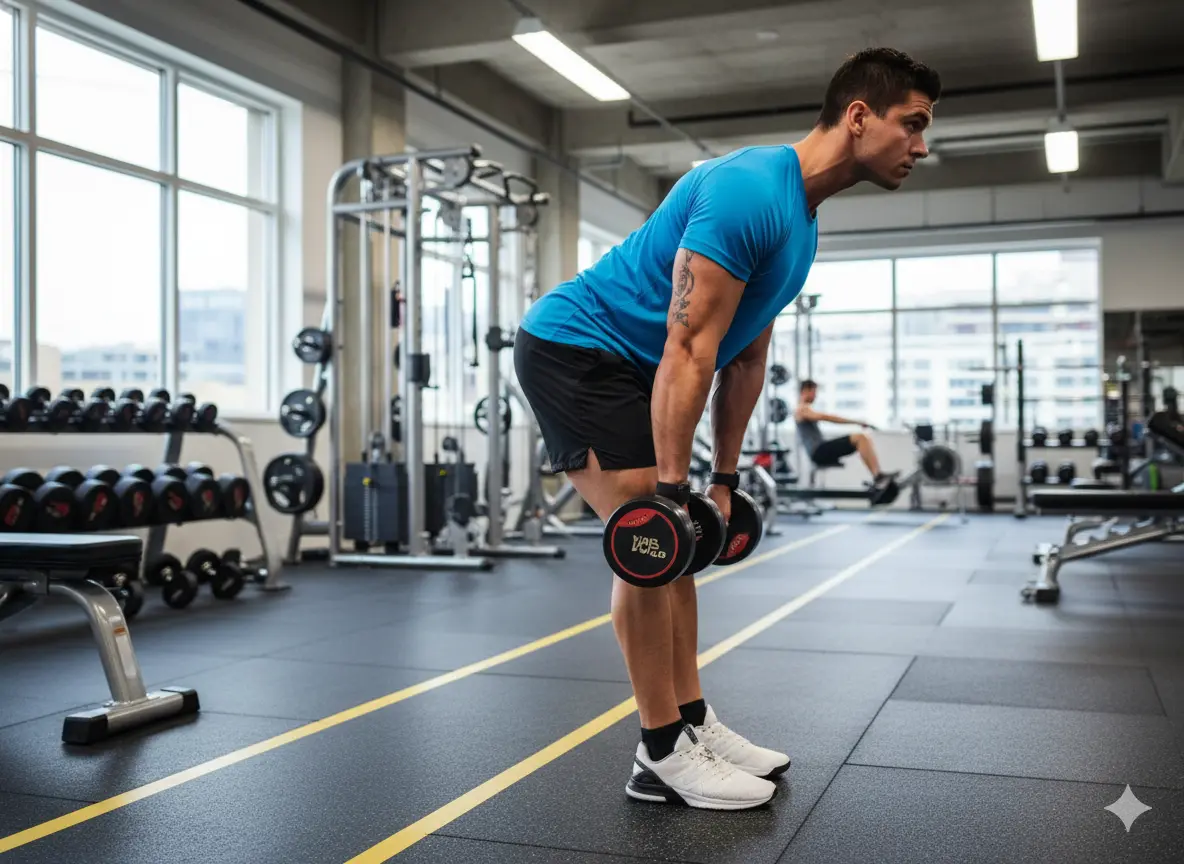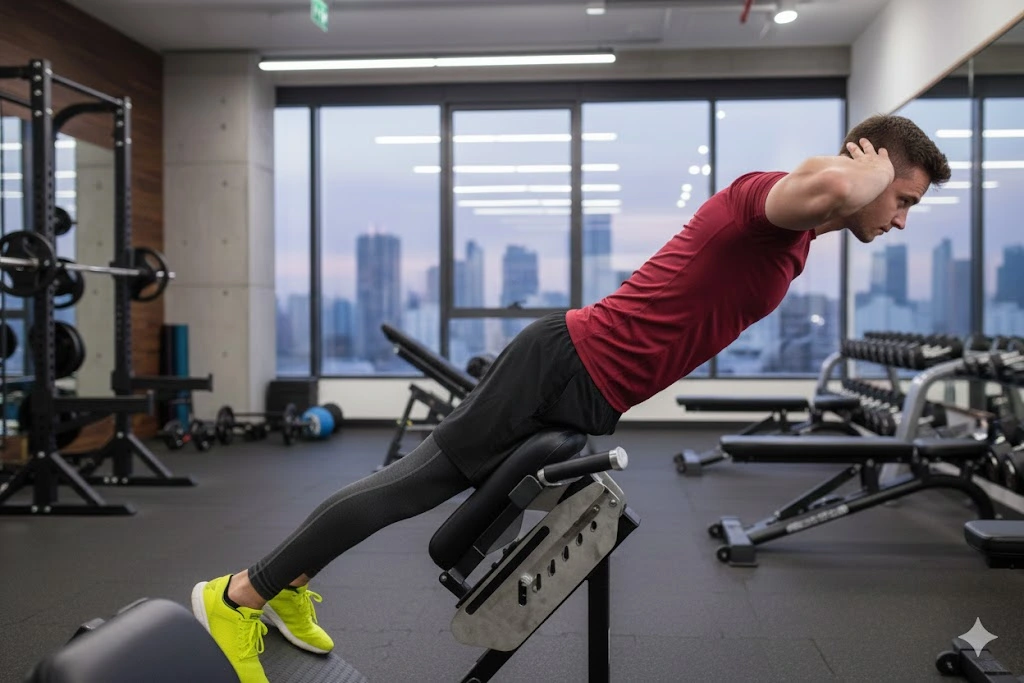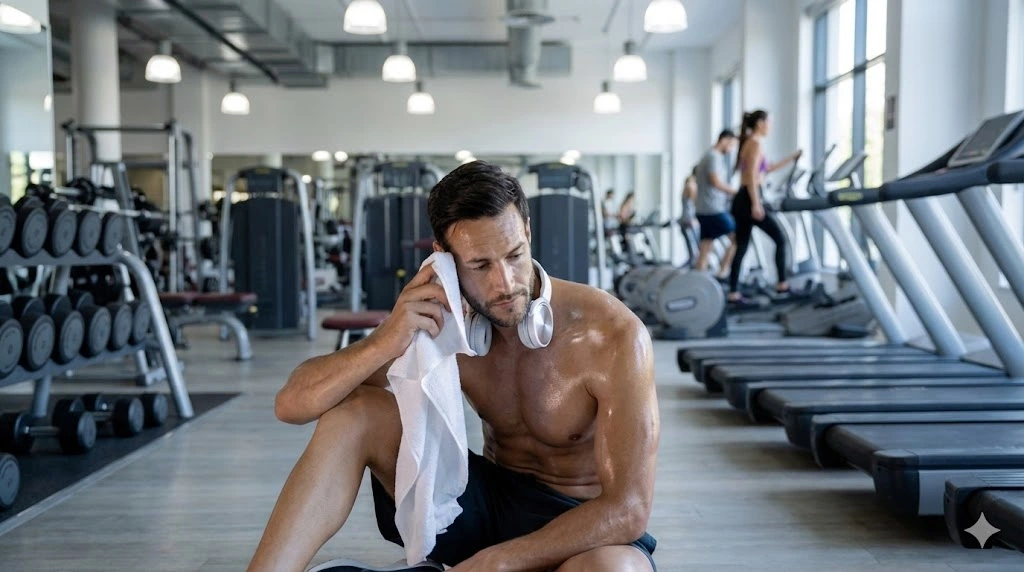Introduction
Training your legs is the foundation of any serious fitness routine, because strong legs support almost every movement you make, whether it’s walking, lifting, running, or simply maintaining good posture throughout the day. Strong lower-body muscles don’t just create a balanced and athletic physique, they also help improve posture, boost metabolism, and elevate overall sports performance. The challenge, however, is that not everyone has access to heavy gym machines or barbells. That’s exactly where Leg Workouts with Dumbbells become a game-changer. Dumbbells are affordable, space-efficient, and versatile enough to be used effectively both at home and in the gym.
With Leg Workouts with Dumbbells, you can train every major muscle group in your lower body, including quads, hamstrings, glutes, and calves, without needing complicated equipment. Whether you’re a beginner looking for an easy leg routine you can perform in your living room or an intermediate lifter searching for more intense variations, these workouts fit all levels. This guide takes you through everything you need, effective exercises, proper form tips, sample training programs, and essential safety advice, so you can get the most out of your Leg Workouts with Dumbbells and see real progress.
Table of Contents
Why Leg Day Matters (Quick Wins)
Leg day often gets skipped, but it’s one of the most important parts of any fitness program. Choosing Leg Workouts with Dumbbells gives you quick, effective results that go far beyond simply building bigger legs.
Balanced physique & symmetry:
Strong legs help you avoid the unbalanced “big upper body, skinny legs” look. With consistent Leg Workouts with Dumbbells, your body develops symmetry and proportional strength.
Reduced back pain:
Strengthening your quads, glutes, and hamstrings improves hip and core stability, reducing stress on the lower back and helping prevent discomfort in everyday movements.
Stronger core through compound leg moves:
Exercises like squats, lunges, and deadlifts, common in most Leg Workouts with Dumbbells, engage your core deeply while also building leg power.
Lower injury risk:
Improved balance and coordination from dumbbell training helps protect your knees, hips, and ankles, whether you’re playing sports or just moving through daily life.
More calorie burn:
Working large muscles like the quads and glutes increases overall calorie expenditure, supporting fat loss and boosting metabolism.
Carryover to big lifts:
A strong lower body builds a solid foundation, enhancing your performance in exercises like bench press, overhead press, and rows by providing greater stability. This is one reason many athletes rely on Leg Workouts with Dumbbells even when they use other equipment.
In short, leg day isn’t just about bigger thighs and calves, it’s about full-body strength, performance, and long-term health.
Know Your Leg Muscles (Plain-English Cheatsheet)
Knowing how each muscle group works helps you perform exercises with better form and target the right areas during your Leg Workouts with Dumbbells.
Quads (front thigh):
These muscles extend your knees, control squat depth, and stabilize your gait while walking or running. In most Leg Workouts with Dumbbells, movements like goblet squats and step-ups heavily recruit the quads.
Hamstrings (back thigh):
Responsible for knee flexion and hip extension, they help you bend, hinge, and decelerate your body when running or changing direction. Dumbbell Romanian deadlifts make hamstrings a key focus in many Leg Workouts with Dumbbells.
Glutes (butt muscles):
The powerhouse of your lower body support posture adds strength to your lifts and improves pelvic stability, making them essential for faster muscle strain recovery.
Adductors/Abductors (inner & outer thighs):
These muscles control hip movement, providing side-to-side stability and helping you stay balanced during lunges and split-stance exercises.
Calves (lower leg):
These muscles support ankle power, sprinting, jumping, and overall lower-body explosiveness.
When you train all of these muscle groups together, your leg training becomes more balanced, reduces weaknesses, and prevents injuries. This is exactly why Leg Workouts with Dumbbells are so effective, they offer a wide range of movements to target every muscle group with precision and control.
Why Train Legs with Dumbbells?
Dumbbells are one of the most versatile tools for building strong, powerful legs, and they make Leg Workouts with Dumbbells effective for all fitness levels. Whether you’re training at home or in the gym, dumbbells offer unique advantages that machines and barbells can’t always match.
Natural range of motion:
Dumbbells allow your joints to move freely, giving your body a more natural movement pattern and reducing strain compared to fixed machine paths.
Joint-friendly training:
Exercises like goblet squats and lunges keep your posture stable and controlled, making Leg Workouts with Dumbbells ideal for beginners and anyone with sensitive knees.
Unilateral strength:
Many dumbbell movements train one leg at a time, helping correct muscle imbalances, improving coordination, and enhancing balance.
Beginner to advanced friendly:
You can start with lighter dumbbells and increase weight, reps, or tempo over time, making Leg Workouts with Dumbbells adaptable for steady progression.
Space-saving and affordable:
A pair of dumbbells doesn’t take much room, making them perfect for home training and essential when building a simple, effective workout plan.
Safe to bail:
Unlike heavy barbell squats, you can drop dumbbells easily if you lose control, making Leg Workouts with Dumbbells safer without compromising results.
In short, dumbbell leg training blends safety, versatility, and effectiveness, making it a smart choice for both beginners and advanced lifters.
How to Hold Dumbbells (Affects Stimulus)
How you hold dumbbells during leg exercises can completely change which muscles work the hardest and how your body stabilizes, something especially important when designing effective Leg Workouts with Dumbbells. Each grip style shifts the tension, challenges your balance, and activates different muscle groups.
At your sides (Suitcase style):
This grip allows you to lift the heaviest loads with maximum stability. It’s ideal for dumbbell deadlifts, farmer’s carries, and other strength-focused movements often included in Leg Workouts with Dumbbells.
Goblet position (front-center, held close to chest):
A beginner-friendly hold that keeps your torso upright, reduces stress on the lower back, and heavily targets the quads. Goblet squats are a staple in many Leg Workouts with Dumbbells because they teach proper squat form.
Front rack (both dumbbells at shoulders):
His grip increases core demand, engages the upper back, and puts more emphasis on the quads. It’s commonly used for front squats, lunges, and step-ups.
Unilateral hold (one dumbbell only):
Holding a single dumbbell forces your core to resist tilting, improving balance and correcting strength imbalances. It’s perfect for split squats, lunges, and suitcase deadlift, key movements in well-rounded Leg Workouts with Dumbbells.
Switching grips isn’t just about adding variety, it’s about progression. Each style challenges your body differently, helping you target weak points, break plateaus, and keep your Leg Workouts with Dumbbells fresh and effective.
Warm-Up (5 Minutes, No Equipment)
Before jumping into your leg workout with dumbbells, it’s important to warm up. A good warm-up boosts blood flow, activates key muscles, and lowers the risk of injury. Here’s a quick 5-minute routine you can do anywhere:
- Ankle Rocks + Calf Pulses (60s): Loosen up the ankles and prep your calves for squats and lunges.
- Hip Flexor Openers (60s each side): Stretch tight hips to allow deeper squats and better lunges.
- Hamstring Hinge Sweeps (60s): Dynamic stretch for the hamstrings to prep for deadlifts.
- Bodyweight Flow (repeat 2x):
- 10 Bodyweight Squats
- 6 Reverse Lunges (per side)
- 6 Hip Hinges
This short routine primes your joints and muscles, so when you pick up dumbbells, your body is ready for stronger, safer movements.
The 12 Best Dumbbell Leg Exercises
These are the best leg workouts with dumbbells you can add to your routine. They cover every major muscle group and allow for progression, whether you train at home or in the gym.
Squat Family
- Goblet Squat: Hold one dumbbell at chest level, elbows tucked in, and squat with heels flat. Great for beginners. Progression: Add tempo (3-1-1) or heavier dumbbells.
- Dumbbell Front Squat: Two dumbbells at the shoulders, chest tall, core braced. More quad demand than goblet squats.
- Sumo Goblet Squat: Wider stance targets adductors and glutes while still hitting quads hard.
Lunge & Split Variants
- Reverse Lunge: Step back instead of forward — easier on the knees and hip-dominant.
- Forward/Walking Lunge: Step forward or move continuously; great for quad focus and conditioning.
- Bulgarian Split Squat (Rear-Foot Elevated Split Squat): Back foot on a bench or step; lean slightly forward for more glute activation.
- Side/Lateral Lunge: Step to the side, loading one leg while stretching the other. Targets adductors and improves lateral strength.
- Curtsy Lunge: Step behind and across for a rotational challenge to the glutes and inner thighs.
Hinge & Posterior Chain
- Dumbbell Romanian Deadlift (RDL): Push hips back, keep dumbbells close to shins, and squeeze glutes at the top. Hamstrings + glutes.
- Single-Leg RDL / B-Stance RDL: Balance challenge that fixes asymmetries. Use a toe-tap or staggered stance for stability.
Step & Calf Work
- Step-Up: Drive through the heel, maintain a tall posture, and control the descent. Progress with a higher box/step.
- Calf Raise: Hold dumbbells at sides, push through toes, and pause at the top. It can be done with a single leg for an extra challenge.
Conditioning Combo
- Dumbbell Thruster (Squat → Press): Full-body move combining squats with an overhead press. Great for conditioning and calorie burn.
Pro tip: Always focus on form first, tripod foot (heel, big toe, little toe on the ground), knees tracking over toes, neutral spine, and finish by squeezing glutes without overextending your back.
Technique Pitfalls & Quick Fixes
The best Leg Workouts with Dumbbells won’t deliver real results if your form is off, and even small mistakes can limit progress or cause injuries. Here are the most common errors and simple fixes to keep your training safe and effective:
Knees caving in during squats or lunges:
Imagine “screwing” your feet into the floor and gently pushing your knees outward so they track over your toes. This cue strengthens alignment and improves the quality of Leg Workouts with Dumbbells.
Lower back strain in RDLs:
Keep your lats tight, as if you’re “crushing oranges in your armpits”, and push your hips back instead of rounding your spine. This protects your lower back and helps hamstringsfire properly.
Wobbling during lunges:
If balance is an issue, narrow your stance by holding one dumbbell in goblet style or shorten your step length. You can also tap your toe between reps to regain stability.
Shallow squats:
Elevate your heels slightly, hold the dumbbell in the front goblet position, or loosen tight ankles with mobility drills. These adjustments help you hit full depth during Leg Workouts with Dumbbells.
Rushing reps:
Slow, controlled tempo ensures better muscle engagement, enhances strength gains, and reduces injury risk, especially when doing Leg Workouts with Dumbbells.
By fixing these small issues, your Leg Workouts with Dumbbells become safer, more effective, and far more rewarding.
Goal-Based Programs (Pick One)
Now that you know the best dumbbell leg exercises, let’s put them into structured programs. Depending on your goal — muscle growth, strength, or conditioning, here’s how you can train:
Hypertrophy (Muscle Growth) — 2 Days/Week
- Day A: Goblet or Front Squat 4×8–12 • RDL 4×8–12 • Reverse Lunge 3×10/side • Calf Raise 3×12–15
- Day B: Bulgarian Split Squat 4×8–12/side • Walking Lunge 3×12/side • Step-Up 3×10/side • Side Lunge 3×8/side
- Rest times: 90–120s on big lifts, 60–90s on accessories.
- Progression: If you hit the top reps two sessions in a row, add more weight next time.
Strength (Minimal Gear) — 2 Days/Week
- Day A: Front Rack Squat 5×4–6 • Dumbbell RDL 5×4–6 • Calf Raise 4×8–10
- Day B: Bulgarian Split Squat 5×5/side • Heavy Step-Up 4×6/side • Single-Leg RDL 4×6–8/side
- Rest times: 2 minutes between sets for heavy lifts.
Conditioning / Time-Crunch (30-Minute AMRAP)
Perform as many quality rounds as possible in 30 minutes:
- 6–10 Front Squats
- 8–12 RDLs
- 16–20 Reverse Lunges (total)
- 10–15 Dumbbell Thrusters
This option is great for fat loss, endurance, and building mental toughness.
Single-DB / No-Bench Mod Track
Not everyone has a full set of dumbbells or access to a bench. The good news is, you can still crush a leg workout at home with just one dumbbell and zero equipment extras. Here’s how to modify:
- No Bench?
- Swap Bulgarian Split Squats for regular Split Squats.
- Replace Step-Ups with Reverse Lunges paired with a high-knee drive.
- Only One Dumbbell?
- Goblet Squat: Hold the dumbbell close to your chest.
- Suitcase Reverse Lunge: Hold the dumbbell at your side while stepping back.
- B-Stance RDL: Stagger your stance and hinge with the dumbbell in one hand.
- Contralateral Split Squat: Hold the dumbbell opposite the working leg to challenge balance and core stability.
These simple swaps ensure you can still hit all major leg muscles, quads, hamstrings, glutes, calves, and adductors, without needing fancy equipment.
Loading & Progression (Simple Rules)
To get stronger and build muscle with leg workouts with dumbbells, you need progressive overload, gradually challenging your muscles over time. Here are simple rules to follow:
- Start smart: Pick a weight where the last 2–3 reps feel tough but your form stays clean. This leaves you with 2–3 reps in reserve (RIR).
- Double progression: First, increase reps until you hit the top of the target range. Once you do that for two sessions in a row, add a small weight jump (2–5 lbs per dumbbell).
- Form comes first: If technique breaks down, regress the load, shorten the range of motion, or slow the tempo until you’re stable again.
- Track progress: Keep a workout log of sets, reps, and weights. Small, consistent increases equal long-term growth.
Following these rules ensures your dumbbell leg workout program never stalls and keeps your gains steady and safe.
Cool-Down (3–5 Minutes)
Finishing your dumbbell leg workout with a cool-down helps reduce soreness, improve flexibility, and speed up recovery. Spend 3–5 minutes on these simple stretches:
- Hip Flexor Stretch (30–45s each side): Kneel on one knee, push your hips forward, and feel the stretch in the front of your hip.
- Hamstring Doorframe Stretch (30–45s each side): Lie on your back, place one heel on a doorway or wall, and stretch your hamstrings.
- Figure 4 Glute Stretch (30–45s each side): Cross one ankle over the opposite knee and gently pull the leg in toward your chest.
- Calf Wall Stretch (30–45s each side): Press your hands against a wall, keep one leg straight behind you, and push the heel down.
A short cool-down routine keeps your legs healthy, your joints mobile, and your body ready for the next workout.
Safety & Modifications
Leg workouts with dumbbells are safe for most people, but you may need to adjust depending on your body and fitness level. Here’s how to train smart:
- Knee-sensitive lifters: Stick to reverse lunges, shorter range of motion squats, or heel-elevated goblet squats to reduce joint stress.
- Low-back-sensitive lifters: Choose goblet or front-loaded squats over heavy RDLs. Strengthen your core with bracing drills before progressing.
- Balance issues: Use a wall, chair, or rail for support when doing single-leg moves. Gradually work toward free-standing versions as your stability improves.
- Beginners: Start with bodyweight squats, glute bridges, or step-ups before adding dumbbells. Focus on form first, load later.
- Advanced lifters: Add tempo (slow eccentric), pauses, or unilateral loading for extra challenge without needing heavier weights.
The key is to listen to your body. Modify exercises when needed so you can stay consistent without pain or setbacks.
FAQs (Fast Answers)
Q1: Can you build legs with just dumbbells?
Yes. As long as you apply progressive overload, train close to failure (2–3 reps left in the tank), and hit enough weekly sets, you can build strong, muscular legs using only dumbbells.
Q2: How often should I train my legs with dumbbells?
For most people, 2 times per week works best. Aim for 10–16 hard sets per muscle group weekly for balanced growth.
Q3: How many exercises should I do per leg workouts with dumbbells?
Stick to 4–6 exercises per session, including squats, hinges, lunges, and accessories. This keeps workouts effective without dragging on too long.
Q4: Are dumbbell leg workouts good for beginners?
Absolutely. Dumbbells are safer than barbells, easier to learn, and great for building strength, balance, and coordination.
Q5: Do I need heavy dumbbells for results?
Not always. You can increase intensity by adding reps, slowing tempo, pausing at the bottom, or choosing unilateral moves like Bulgarian split squats.
Who This Is For / Who Should Skip
Who This Is For:
- Home lifters: Anyone without access to big machines or barbells can still get a full leg workout at home with just dumbbells.
- Busy gym-goers: If you want quick, effective workouts without waiting for machines, dumbbells are your best friend.
- Beginners to intermediates: Simple movements like goblet squats and lunges are easy to learn yet highly effective.
- Imbalance fixers: Unilateral moves with dumbbells help correct left–right strength differences and improve balance.
Who Should Skip (or Adjust):
- People with acute pain: If you have knee, hip, or back pain that isn’t under control, consult a professional before starting.
- Those recovering from injury: Stick to rehab-approved exercises until cleared for free weight training.
- Absolute beginners with poor mobility: Start with bodyweight exercises and basic calisthenics before loading with dumbbells.
Dumbbell leg workouts are highly versatile, but they should always be adapted to your personal fitness level and needs.
Sample 7-Day Schedule (Plug & Play)
Here’s how you can organize your dumbbell leg workouts into a weekly training plan. This balances strength, hypertrophy, mobility, and recovery:
- Monday: Legs A (Hypertrophy)
- Goblet Squat, RDL, Reverse Lunge, Calf Raise
- Tuesday: Upper Body / Conditioning
- Wednesday: Mobility & Active Recovery (light cardio, stretching, walking)
- Thursday: Legs B (Hypertrophy)
- Bulgarian Split Squat, Walking Lunge, Step-Up, Side Lunge
- Friday: Upper Body / Core
- Saturday: Optional 30-Minute Conditioning AMRAP (Front Squat, RDL, Reverse Lunge, Dumbbell Thruster)
- Sunday: Rest Day
Conclusion
Leg Workouts with Dumbbells are one of the most effective and accessible ways to build strength, balance, and muscle without needing heavy machines or a full gym setup. With exercises ranging from beginner-friendly goblet squats and lunges to advanced movements like RDLs and Bulgarian split squats, dumbbells allow you to train safely and intensely, whether you’re at home or in the gym. When you follow a proper warm-up, focus on good form, and apply progressive overload, Leg Workouts with Dumbbells help you develop stronger legs while also improving posture, core stability, and overall athletic performance.
No matter your goal, muscle growth, strength, conditioning, or fat loss, the sample programs in this guide can be adjusted to your schedule and fitness level. The key is consistency. Stick to your pre-workout meal, challenge yourself with steady progression, and stay committed. Over time, Leg Workouts with Dumbbells will deliver powerful, noticeable results that carry over to every part of your training and daily life. With patience and effort, your hard work will pay off, making Leg Workouts with Dumbbells an essential part of your long-term fitness journey.






2 Responses
hey there and thanks to your info – I’ve definitely picked up something new from right here. I did on the other hand experience several technical issues the usage of this website, since I skilled to reload the site a lot of instances previous to I could get it to load correctly. I were pondering in case your web hosting is OK? Now not that I’m complaining, but sluggish loading cases occasions will often impact your placement in google and could damage your quality rating if advertising and ***********|advertising|advertising|advertising and *********** with Adwords. Anyway I am including this RSS to my e-mail and could glance out for much extra of your respective fascinating content. Ensure that you update this again very soon..
I dugg some of you post as I cerebrated they were handy handy